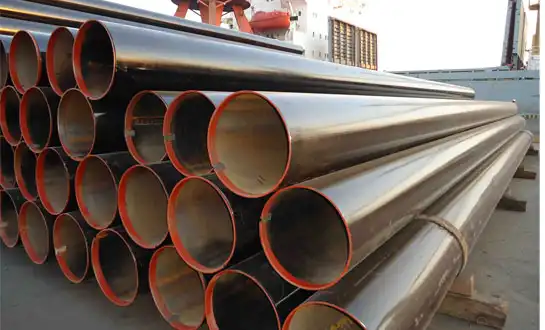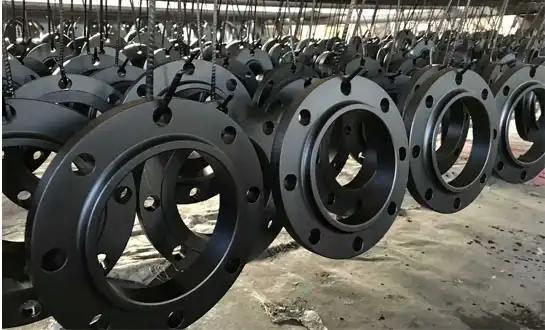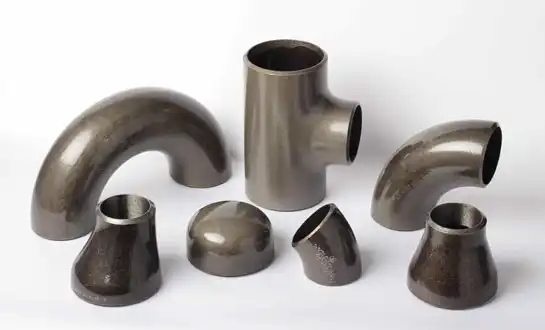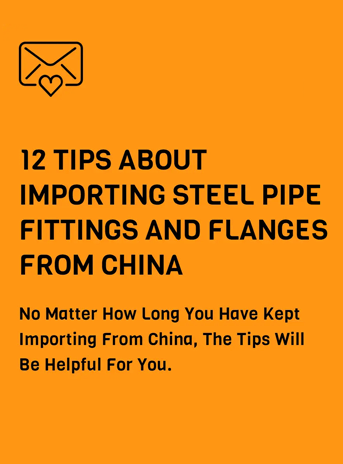Best Steel Pipe Fittings for Acidic Environments: A Complete Review
Selecting appropriate steel pipe fittings for acidic environments represents one of the most critical decisions in industrial piping design. When acidic media run through pipelines, normal materials break down very quickly. This can lead to terrible breakdowns and costly shutdowns. A multitude of information regarding the most effective steel pipe connectors for use in saline environments, such as chemical plants, hydrocarbon factories, and WWTPs, is contained in this assessment. If engineers know about the materials used, the coats that cover them, and how often they need to be maintained, they can pick parts that will last a long time, are safe to use, and meet international standards.
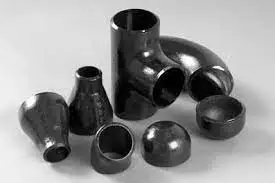
Understanding Corrosion Mechanisms in Acidic Pipeline Systems
Chemical Reactions and Material Degradation
Acidic environments accelerate degradation through electrochemical reactions that compromise structural integrity of conventional piping materials. When acids contact unprotected steel surfaces, hydrogen ions penetrate the passive oxide layer, initiating oxidation reactions. This process occurs rapidly in concentrated sulfuric, hydrochloric, and nitric acid applications where pH levels below 4.0 create aggressive conditions. Steel pipe fittings manufactured from basic carbon steel typically fail within months without proper protection. Galvanic corrosion intensifies when dissimilar metals connect in acidic electrolytes, while pitting corrosion develops as localized attack penetrates protective films, forming deep cavities that compromise wall thickness unexpectedly, making material selection absolutely critical for safety and reliability.
Material Selection and Environmental Factors
Choosing appropriate materials requires comprehensive evaluation of service conditions including acid type, concentration ranges, operating temperatures, and pressure requirements. Austenitic stainless steels containing chromium and nickel offer excellent resistance to oxidizing acids, while molybdenum additions enhance performance in chloride-containing environments. Steel pipe fittings manufactured from advanced materials maintain structural integrity where carbon steel would fail rapidly. Temperature fluctuations dramatically influence corrosion rates, with elevated temperatures accelerating chemical reactions exponentially. Flow velocity affects erosion-corrosion phenomena where mechanical wear combines with chemical attack, particularly at directional changes in elbows and tees. Regular monitoring through ultrasonic thickness testing and visual inspections detects deterioration before catastrophic failures occur.
Top Steel Pipe Fitting Materials for Acidic Applications
Stainless Steel Grades for Corrosive Environments
Stainless steel represents the foundational material family for acidic service applications. Type 316 stainless steel incorporates molybdenum that significantly enhances resistance to pitting and crevice corrosion in chloride environments. Steel pipe fittings manufactured from 316L grades feature reduced carbon content that prevents sensitization during welding, maintaining corrosion resistance across heat-affected zones. For exceptionally aggressive environments, super austenitic grades like 904L contain elevated nickel, chromium, and molybdenum levels that resist sulfuric acid, phosphoric acid, and mixed acid systems, delivering reliable performance where standard grades fail rapidly.
Specialized Alloys and Coating Technologies
Beyond stainless steels, specialized alloy compositions address extreme corrosive conditions. Hastelloy C-276 contains high nickel and molybdenum that resist hydrochloric acid and sulfuric acid across broad concentration ranges. Steel pipe fittings made from these materials cost a lot, but they are the most reliable in important services. Advanced coating systems transform economical carbon steel pipe fittings into corrosion-resistant components at significantly lower costs than solid alloy construction. Fusion-bonded epoxy coatings provide excellent adhesion and chemical resistance, while PTFE linings offer exceptional chemical inertness across extreme pH ranges. To make sure these protective solutions work well for a long time, the surfaces must be prepared correctly and quality control checks must be done.
Installation and Maintenance Best Practices
Welding and Inspection Protocols
Welding procedures significantly influence corrosion resistance of steel pipe fittings in acidic service applications. The heat that is added during welding changes the metallurgical structures, which might make them less resistant to corrosion. Qualified welding procedures specify appropriate filler metals, shielding gases, and heat treatments that maintain parent material properties. Systematic inspection programs detect deterioration before catastrophic failures occur. Ultrasonic thickness testing quantifies remaining wall thickness in steel pipe fittings, establishing trends that predict component life expectancy. Electrical resistance probes that check for rust show how fast corrosion is happening in real time. You can change the process to make things last longer and figure out when to replace them.
Process Optimization for Extended Service Life
Understanding chemical interactions between process fluids and piping materials prevents costly mistakes. Chemical compatibility is influenced by concentration, temperature, and the synergistic interactions among several species. Process modifications including pH adjustment or inhibitor addition reduce corrosion rates without changing piping materials. Steel pipe fittings benefit from optimized flow velocities that minimize erosion-corrosion while avoiding stagnation. Proper drainage eliminates low points where acids accumulate and cause localized corrosion, while venting provisions release gases that promote pitting corrosion.
Conclusion
It is imperative to evaluate the compounds, materials, and intended application of steel pipe connectors in order to determine the most suitable ones for corrosive environments. Stainless steels, specialized alloys, and protective coatings each offer distinct advantages depending on service severity. At HEBEI RAYOUNG PIPELINE TECHNOLOGY CO., LTD., we provide certified steel pipe fittings engineered for demanding acidic applications, backed by ISO 9001:2015 quality systems and GOST-R compliance for global markets.
FAQ
1. What stainless steel grade works best for sulfuric acid service?
Type 316L stainless steel provides good resistance to dilute sulfuric acid below 10% concentration at ambient temperatures. For higher concentrations, super austenitic alloys like 904L or nickel-based alloys deliver superior performance. Steel pipe fittings must be selected based on specific acid concentration and temperature conditions to ensure adequate service life.
2. How do protective coatings compare to solid alloy fittings?
Protective coatings offer economical corrosion protection for carbon steel pipe fittings in moderately aggressive environments, reducing material costs significantly. However, coating damage exposes base metal to rapid attack. Solid alloy steel pipe fittings are resistant to corrosion all over, so you don't have to worry about coatings failing.
3. What inspection frequency is recommended for acidic service piping?
Inspection intervals depend on corrosion rates and risk assessments. Steel pipe fittings in highly corrosive services may require annual ultrasonic thickness surveys, while less aggressive conditions permit three to five year intervals. Tracking rust all the time gives real-time data that helps important processes.
4. Can carbon steel fittings be used in acidic applications?
Carbon steel pipe fittings rapidly corrode in acidic environments without protective measures. Protective coatings or inhibitors can extend service life in specific applications, but stainless steel or alloy materials provide more reliable long-term performance where failure consequences justify higher material costs.
HEBEI RAYOUNG PIPELINE: Your Trusted Steel Pipe Fittings Manufacturers and Suppliers
At HEBEI RAYOUNG PIPELINE TECHNOLOGY CO., LTD., we recognize that superior performance in acidic environments demands uncompromising quality. As leading pipes and fittings manufacturers, we supply premium steel pipe fittings including buttweld elbows, reducers, and flanges manufactured from certified corrosion-resistant materials. Our comprehensive quality systems maintain ISO 9001:2015 certification alongside GOST-R and SGS validation. We understand that consistent quality and innovation define successful acidic service applications. Contact our specialists today at info@hb-steel.com to discuss your requirements and discover how our steel pipe fittings can enhance your system reliability.
References
1. Revie, R. W., & Uhlig, H. H. (2008). Corrosion and Corrosion Control: An Introduction to Corrosion Science and Engineering. Fourth Edition. John Wiley & Sons.
2. Craig, B. D., & Anderson, D. S. (1995). Handbook of Corrosion Data. Second Edition. ASM International.
3. Schweitzer, P. A. (2010). Fundamentals of Corrosion: Mechanisms, Causes, and Preventative Methods. CRC Press.
4. Sedriks, A. J. (1996). Corrosion of Stainless Steels. Second Edition. John Wiley & Sons.
5. NACE International. (2015). Materials Selection for Piping Systems in Corrosive Service. NACE Standard MR0175/ISO 15156.
6. American Society of Mechanical Engineers. (2019). Process Piping: Materials and Specifications. ASME B31.3.

Need a quote? Want to see samples? Just say hello. We’re friendly. We’re fast. And we’re ready when you are.
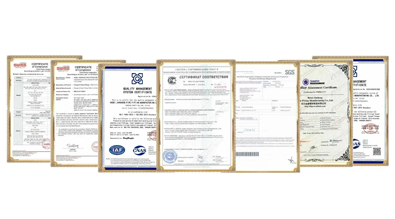
Welcome to RAYOUNG – Strong Pipes, Stronger Promise
